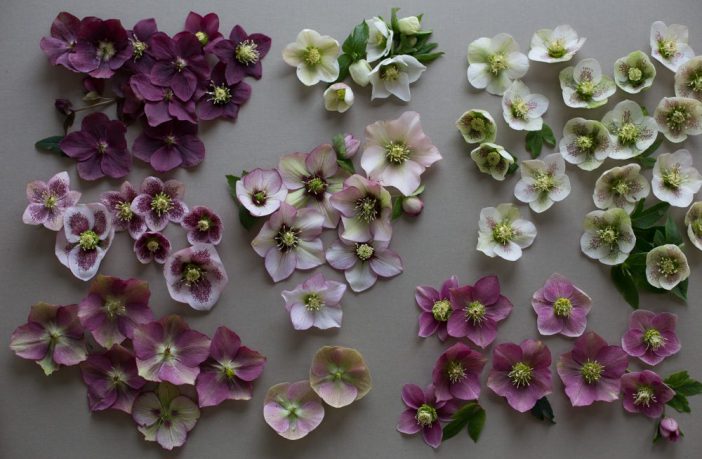The days are finally getting noticeably longer and the change in seasons is on the horizon. I’ve had a terrible case of spring fever this year after spending the winter dreaming and scheming about all the possibilities for the acreage on our new farm.
On a recent morning walk around the property I spotted a few brave blooms pushing up through the cold earth: my treasured hellebores! As some of the very first perennials to bloom in my cut flower garden, they are always joyful sight and a sure sign that spring is on the way.
For years, come mid winter, all of my gardening friends would be crawling around in their flower beds, heads cocked to the sky, admiring the pretty nodding flower of their prized hellebores. I would usually get down in the mud too and halfheartedly admire the crop. But for some reason, they just didn’t have the same effect on me that they did other gardeners.
That was until I started growing my own. Now every winter you’ll find me crawling around like a fool in my shade garden, oohing and aahing over the delicate nodding blossoms too. If we have company, I’ll make them get down low and experience the magic with me. Then I’ll hack off a handful of flowering stems and send them home a big ole bouquet. I admit, I was late to join what I call the Hellebore Appreciation Society. Are you a member yet?

Hellebores, also commonly called lenten rose, are super easy to grow and extremely long-lived. These little beauties bloom from mid to late winter all the way through early summer. Hellebores come in a gorgeous array of colors in array of shades including pink, mauve, an almost-black burgundy, green, buttery yellow and creamy whites. Some of my favorites include those frilly double and those with delicately freckled blooms.
These perennial plants prefer well-drained, rich, organic soil. Hellebores thrive in the shade, making them a great choice if your garden doesn’t have full sun. Their rough, serrated leaves also make them resistant to deer and other critters. Hellebores take a few years to become established, so don’t plan on harvesting a lot of blooms the first year or two.
You can sometimes find hellebores at garden centers, but expect to pay premium prices. Most varieties will reseed, but since they are hybrids, you never know what you’ll get. Barry Glick (aka the Hellebore King) at Sunshine Farm & Gardens is a great source for hard-to-find hellebores.
Years ago I planted 50 baby hellebores on the north side of our greenhouses. It’s the perfect shady spot, protected from harsh wind and temperature extremes.
Each winter, before the flowers emerge I spread a thick layer of compost around the plants as an amendment. It also doubles as mulch, keeping weeds down for the remainder of the year. When new growth starts to emerge in mid winter, I go through and remove all of the tattered, ugly leaves so that floral display is more visible.





